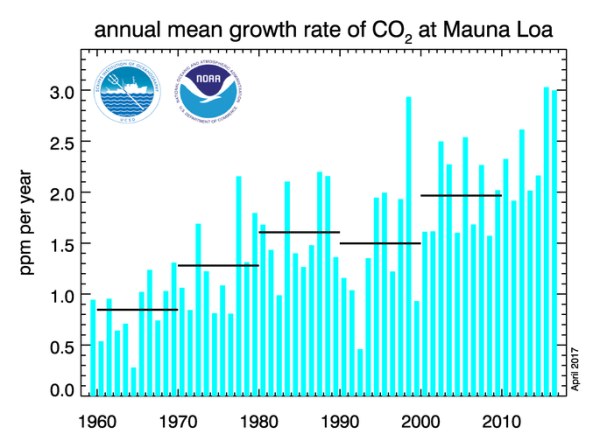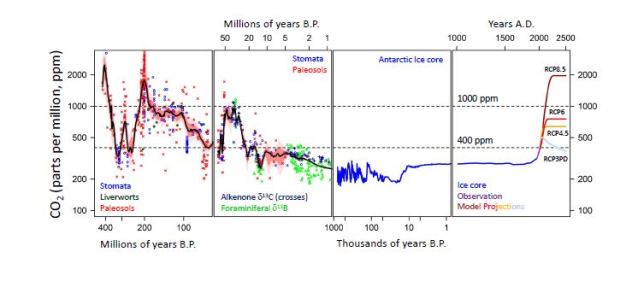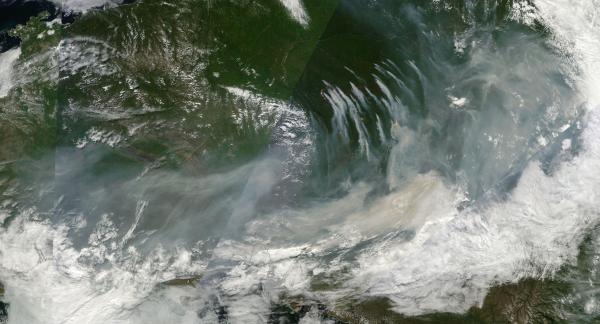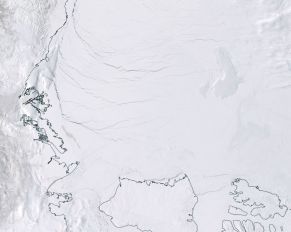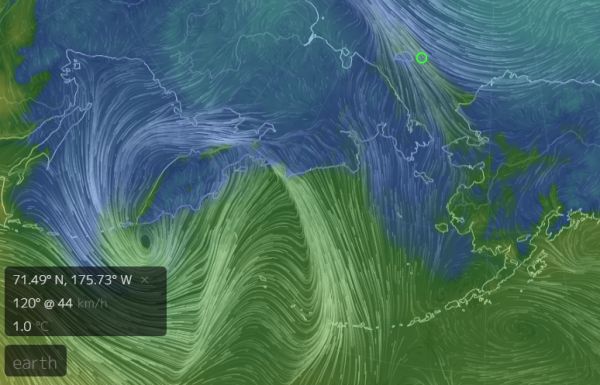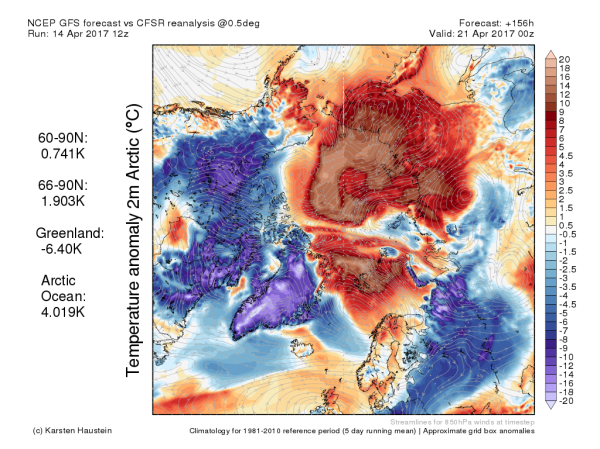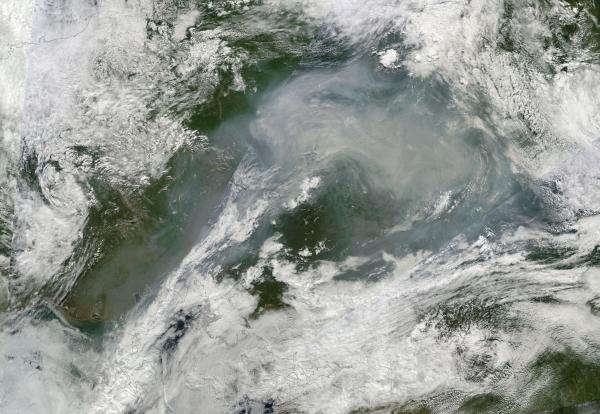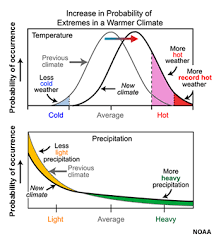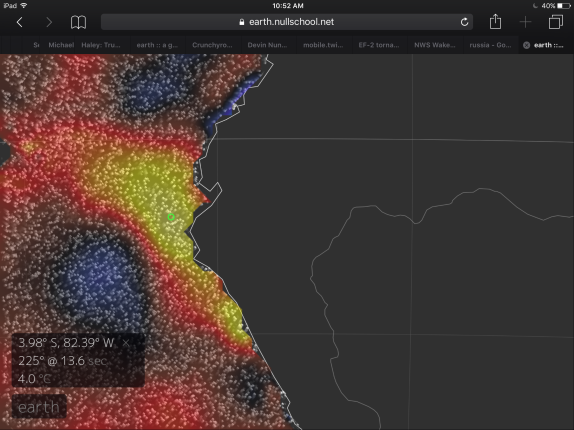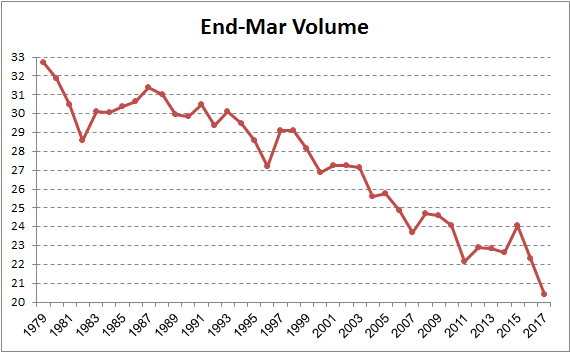I just want to remind the administration that science is political. It is inherently political like everything else … It’s in the U.S. Constitution, Article 1, Section 8, to promote the progress of science and useful arts. That’s what enables innovation, and if our country stops innovating, it will not be able to compete worldwide. — Bill Nye
*****
Scientists — from luminaries like Michael Mann, Bill Nye, Richard Alley, Gavin Schmidt, Stefan Rahmstorf and Neil deGrasse Tyson, to thousands of humbly toiling researchers for the public good whom you’ve probably never heard of — need our help now more than ever.

(Earth Day’s 2017 March for Science produced an unprecedented outpouring of support for public, non-special-interest-based scientific advancement and research around the world. Unfortunately, despite widespread internet and print coverage, broadcast media barely mentioned the historic event.)
Around the world and in the United States, science budgets are under threat, politically motivated individuals attempt to delete factual information related to public health and safety from science websites, individual scientists are subject to politically motivated attacks by quacks and climate change deniers in the hallowed halls of the U.S. Congress, and the person elected president is willfully scientifically illiterate while openly expressing opinions and pursuing policies that are hostile to fact-based science.
Public Rallies in Support of Scientists Under Threat
On Saturday, April 22nd, in honor of Earth Day, hundreds of thousands of people around the world marched in solidarity with scientists. Their essential jobs, often health, safety, and national security-related, are under threat of expungement by individuals and industries now empowered to attack the very basis of scientific truth. Though spearheaded by anti-science climate change deniers and those who harmfully attack public vaccination programs, the gamut of attacks on scientific understanding extends to research on toxic substances, water quality and security, endangered species, food safety and sustainability, forest resiliency, earth and weather observation and many, many more helpful endeavors.
(Saturday’s March for Science drew amazing support from around the globe.)
Weather Underground’s Bob Henson, in his own poignant and heartfelt call to join the march, noted:
For many of us, a prime motivation for marching on Saturday is to express our dismay and anger at the proposed slashing of U.S. federal funding of science that’s now on the table… These proposals run the gamut from medical to atmospheric research; in many areas, they would be the deepest cutbacks in decades. Cuts to ongoing scientific research can be especially problematic. It can take years to gather the people and resources needed for a major study. Once the momentum is disrupted and people scatter, a project may never fully recover. In the world of atmospheric science, satellites and other critical observing tools are especially vulnerable to funding-related problems. We only have one global atmosphere, and there is no substitute for monitoring it as closely as possible—including the effects that human-produced greenhouse gases are having on it. [emphasis added]
The public outpouring in support of these scientists — who often work for modest salaries and generate considerable public good for years and decades following the completion of their work — was tremendous. 610 demonstrations blanketed not just the U.S. but scores of countries and hundreds of cities around the world. Washington, New York, Sydney, London, Denver, L.A. and even Antarctica got involved. Never before in modern history has such an amazing show of support for scientific endeavors by climate scientists and others occurred.
Broadcast Media’s Increasingly Irresponsible Coverage — Or Lack Thereof
And though print media outlets like The Guardian, The New York Times, and The Washington Post provided almost continuous coverage of this historic event, television broadcast news media on Sunday morning following the protest was deafeningly silent. According to Media Matters:
Sunday news shows generally ignored the events that attracted hundreds of thousands of protesters. ABC’s This Week, CBS’ Face the Nation, and NBC’s Meet the Press failed to mention the March for Science at all, according to a Media Matters review. CNN’s State of the Union only had a brief headline about the demonstrations, and Fox Broadcasting Co.’s Fox News Sunday only dedicated about one and a half minutes to the story.
Such failure to cover follows a long-running pattern of apparently oblivious or even anti-science-based activity in TV news media. For example, the Presidential debates hosted by big TV networks included zero questions on the key scientific issue of climate change. Broadcast media sources often host climate change deniers — giving quackery, politicization, and long-disproven claims equal time to actual established science. Meanwhile, TV coverage of climate change-related science and events has plummeted even as climate change-related impacts have steadily worsened. At a time when the Earth is the warmest it has ever been since the dawn of human civilization (and probably in at least 115,000 years), when ice caps are melting, seas are rising, the Great Barrier Reef is dying, crops are endangered and cities like Miami are slowly succumbing to the rising tides, such a dearth of coverage is both unconscionable and amoral.
(My father-in-law, a retired rocket scientist for the U.S. Navy, braves the rain to show his support for the Science March. Mainstream broadcast media, however, was sadly mostly AWOL.)
Over the weekend, many of the same networks that have failed to cover the climate crisis also failed to report on the issue of special-interest-based attacks on science, as well as the public protest and outrage over such attacks. This neglectful non-reporting serves to enable climate bad actors and provides cover for those who attack scientists. Even worse, many of these same broadcast news organizations, in the few rare instances when it was mentioned, used the March to provide a platform for climate-change deniers to level attacks against those who support science. Such actions make these broadcast news organizations (of which Fox News is almost always first and worst) at least partially complicit in the assault on science that spurred the Marches in the first place.
At the start of the Science March this past Saturday, Bill Nye so eloquently reminded us that science and its underlying and ever-expanding quest for fact-based truth is a critical cornerstone of our democracy. However, in order for a healthy democracy supportive of the public good to exist, broadcast media’s silence over or denial of critical scientific issues needs to stop. A large subset of the fourth estate of government in the form of independent internet media and various mainstream print media sources have stepped up to the plate when it comes to providing more responsible coverage of climate change and other key science-based issues. It’s time for broadcast media to pull the gigantic plank out of its own eye, wash its mouth out with a large dollop of soap, and follow suit.

(Broadcast media’s failure to adequately or responsibly cover the Science March follows a longer-term trend of reduced science and climate coverage by major TV outlets. In addition, networks like Fox often host climate-change skeptics or deniers, providing a false balance to actual mainstream scientists. Image source: Media Matters.)
The science, along with the foundations of a healthily functioning democracy, is under attack by politically motivated anti-science interests at the exact time that dangers to public health and safety in the form of climate change and increasingly virulent diseases are on the rise. This is a story that needs to be covered. And it is arguably the biggest, most important story in the history of our nation and our race. So to broadcast media we say — pitch in, or get the hell out of the way.
Links:
The March for Science
Why We are Taking Part in the March for Science
March for Science on Earth Day
Sunday Shows Mostly Silent on the March for Science
Historians Say March for Science is Pretty Unprecedented
Every Continent Turned out For Science March
Networks Providing Coverage of Science March Gave Platform to Climate Change Deniers
Why Has Climate Change Been Ignored in U.S. Electoral Debates?
Trump Presses Control+Alt+Delete on Science
Lamar Smith’s Attacks on Science are Funded by the Fossil Fuel Industry
Hat tip to Suzzanne
Hat tip to Robert in New Orleans
Hat tip to Ryan in New England
Hat tip to Colorado Bob
Scientific hat tip to Bob Henson
Special thanks to everyone here and elsewhere who showed up this weekend in support of science







